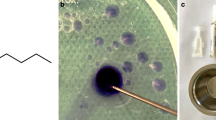Summary
There are at present strong indications for surgery in patients suffering from symptomatic extracranial carotid stenoses of >70%. Surgery of coincidental aneurysms is a still debated problem, but there is general agreement that it is indicated in selected cases according to the patient's life-expectancy and size and site of the aneurysm. The coexistence of these two lesions raises a decisionmaking problem. We reviewed 389 endarterectomies and found 12 intracranial berry aneurysms in 10 (2.6%) patients. All the 10 patients were harbouring a symptomatic carotid stenosis of >70%. Since the correction of a stenosis increases blood flow to an aneurysm, our approach was to first operate on the intracranial lesion and then the stenosis in 7 patients harbouring aneurysms >5 mm. Two patients affected by small aneurysms <5 mm of an A2 azygos and left internal carotid artery underwent left endarterectomy only. The last patient was submitted first to percutaneous angioplasty of a left stenosis, then to open surgery of a contralateral middle cerebral aneurysm and finally to intravascular occlusion of a small aneurysm of the left internal carotid bifurcation by menas of a coil; this policy was adopted in order to restore normal haemodynamic conditions before the intracranial procedure. There was no mortality or permanent morbidity following surgery for aneurysm or endarterectomy. Transient morbidity occurred in 2 cases after clipping of aneurysms of the anterior communicating and middle cerebral arteries. Our results suggest that surgery of coincidental aneurysms may give good results even when there is a severe symptomatic stenosis in the neck. Moreover, the presence of a small intracranial aneurysm does not seem to be an additional risk factor for endarterectomy. When the lesions are on different sides, it may be better to treat the stenosis first if it decreases the ipsilateral cerebral blood flow.
Similar content being viewed by others
References
ACAS Group (1989) Endarterectomy for asymptomatic carotid artery stenoses. Stroke 20: 844–849
Adams HP Jr (1977) Carotid stenosis and coexisting ipsilateral aneurysm. Arch Neurol 34: 515–515
Barnett HJM (1994) Progress in understanding the role of carotid endarterectomy. J Can Sci Neurol 21: 85–87
Chang HS, Kirino T (1995) Quantification of operative benefit for unruptured cerebral aneurysms: a theoretical approach. J Neurosurg 83: 413–420
Denton IC Jr, Gutmann L (1973) Surgical treatment of symptomatic carotid stenosis and asymptomatic ipsilateral intracranial aneurysm. Case report. J Neurosurg 38: 662–665
Dippel DWJ, Vermeulen M, Braakman R, Habbema JDF (1994) Transient ischemic attacks, carotid stenosis and an incidental intracranial aneurysm. A decision analysis. Neurosurgery 34: 449–458
ECAST Collaborative Group (1991) European Carotid Artery Surgery Trial: interim results for symptomatic patients with severe (70–99%) carotid stenosis. Lancet 337: 1235–1243
Eliasziw M, Streifler JY, Fox AJ, Hachinski VC, Ferguson GC, Barnett HJM (1994) Significance of plaque ulceration in symptomatic patients with high-grade carotid stenosis. Stroke 25: 304–308
Ferguson GC (1970) Turbulence in human intracranial saccular aneurysms. J Neurosurg 33: 485–497
Ferguson GC, Peerless SJ, Drake CG (1981) Natural history of intracranial aneurysms (letter). N Engl J Med 305: 99
Gurdijan ES, Hardy WG, Lindner DW,et al (1962) Symposium: occlusive cerebrovascular disease. Diagnostic evaluation and treatment (cited by Stern). Trans Am Acad Ophthalmol Otolaryngol 66: 149–165
Heiskanen O (1986) Risks of surgery for unruptured intracranial aneurysms. J Neurosurg 65: 451–453
Heros RC, Kistler JP (1993) Intracranial arterial aneurysms — an update. Stroke 14: 628–631
Jane JA, Kassell NF, Torner JC, Winn HR (1985) The natural history of aneurysms and arteriovenous malformations. J Neurosurg 62: 321–323
Juvela S, Porras M, Heiskanen O (1993) Natural history of unruptured aneurysms: a long-term follow-up study. J Neurosurg 79: 174–182
Kassell NF, Torner JC (1983) Size of intracranial aneurysms. Neurosurgery 12: 291–297
Khanna RK, Malik GM, Qureshi N (1996) Predicting outcome following surgical treatment of unruptured intracranial aneurysms: a proposed grading system. J Neurosurg 84: 49–54
King JT, Berlin JA, Flamm ES (1994) Mortality and morbidity from elective surgery for asymptomatic, unruptured cerebral aneurysms. J Neurosurg 81: 837–842
King JT, Glick HA, Mason TJ, Flamm ES (1995) Elective surgery for asymptomatic, unruptured intracranial aneurysms: a cost-effectiveness analysis. J Neurosurg 83: 403–412
Ladowski JS, Webster MW, Jonas HO, Steed DL (1984) Carotid endarterectomy in patients with asymptomatic intracranial aneurysms. Ann Surg 200: 70–73
Nagashima M, Nemoto H, Hadeishi Het al (1993) Unruptured aneurysms associated with ischemic cerebrovascular diseases. Surgical indications. Acta Neurochir (Wien) 124: 71–78
NASCET Collaborators (1991) Beneficial effect of carotid endarterectomy in patients with high-grade carotid stenosis. N Engl J Med 325: 445–453
Parenti G, Fiori L, Marconi F (1992) Intracranial aneurysm and cerebral embolism. Eur Neurol 32: 212–215
Schumaker RD, Avant WS, Cohen GH (1976) Coincidental multiple intracranial aneurysms and symptomatic carotid stenosis. Stroke 7: 504–506
Silverstein A (1965) Arteriography of stroke: incidence of mass lesions in patients with clinical diagnosis of occlusive cerebrovascular disease. Arch Neurol 12: 387–389
Stern J, Whelan M, Brisman R, Correll JW (1979) Management of extracranial carotid stenosis and intracranial aneurysms. J Neurosurg 51: 147–150
Wiebers DO, Whisnant JP, O'Fallon WM (1981) The natural history of unruptured intracranial aneurysms. N Engl J Med 304: 696–698
Winn HR, Almaani WS, Berga SL, Jane JA, Richardson AE (1985) The long-term outcome in patients with multiple aneurysms: incidence of late haemorrhage and implication for treatment of incidental aneurysms. J Neurosurg 59: 642–651
Wirth FP, Laws ER Jr, Piepgras D, Scott RM (1983) Surgical treatment of incidental intracranial aneurysms. Neurosurgery 12: 507–511
Author information
Authors and Affiliations
Rights and permissions
About this article
Cite this article
Pappadá, G., Fiori, L., Marina, R. et al. Management of symptomatic carotid stenoses with coincidental intracranial aneurysms. Acta neurochir 138, 1386–1390 (1996). https://doi.org/10.1007/BF01411116
Issue Date:
DOI: https://doi.org/10.1007/BF01411116




